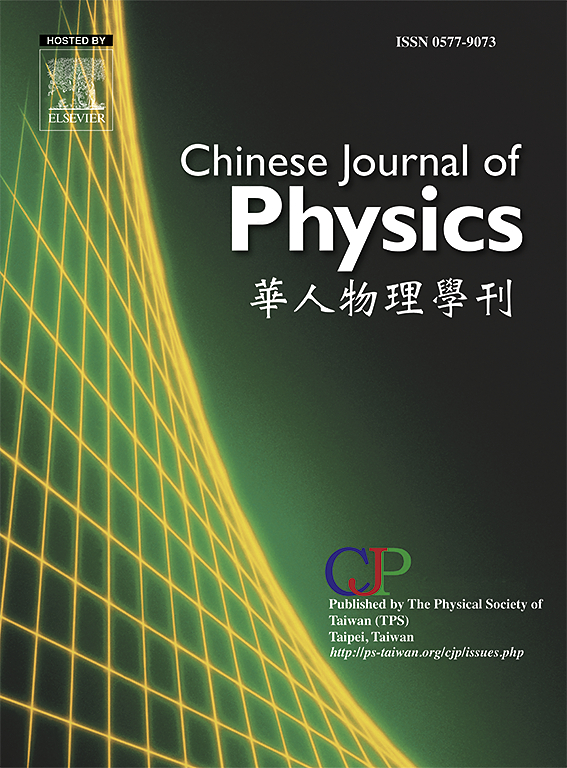Fluid-structure interaction analysis of blood flow in collapsible channels: Implications for sports performance
IF 4.6
2区 物理与天体物理
Q1 PHYSICS, MULTIDISCIPLINARY
引用次数: 0
Abstract
The flow of fluid in collapsible channels is a topic of great interest with numerous physiological applications, including blood flow during sports and exercise. This paper presents a fluid-structure interaction (FSI) model for the study of single-phase fluid flow through a microchannel with a two-sided collapsible wall. The model considers the viscoelastic properties of the fluid and incorporates a moving mesh approach to analyze the deformation of the channel walls. Three distinct modes of motion are observed in the elastic walls involving the elastic walls bulge outward, they undergo a mode-2 deformation characterized by two half-wavelengths along the elastic walls, and the walls indent inward towards the channel. Furthermore, the study shows that as the Weissenberg number increased, there is an associated increase in pressure on the central part of the plate, particularly the major portion. This increase in pressure leads to a decrease in the deflection of the plate. Additionally, the results reveals that the thickness of the plate influences the wall deformations. Thicker plates exhibites minimal deformation compared to thinner plates, which display more pronounced deformations. Moreover, an increase in plate thickness results in a gradual upward (downward) movement of the lowest point of the upper wall (the highest point of the down wall), eventually shifting towards the midpoint of the elastic walls.
求助全文
约1分钟内获得全文
求助全文
来源期刊

Chinese Journal of Physics
物理-物理:综合
CiteScore
8.50
自引率
10.00%
发文量
361
审稿时长
44 days
期刊介绍:
The Chinese Journal of Physics publishes important advances in various branches in physics, including statistical and biophysical physics, condensed matter physics, atomic/molecular physics, optics, particle physics and nuclear physics.
The editors welcome manuscripts on:
-General Physics: Statistical and Quantum Mechanics, etc.-
Gravitation and Astrophysics-
Elementary Particles and Fields-
Nuclear Physics-
Atomic, Molecular, and Optical Physics-
Quantum Information and Quantum Computation-
Fluid Dynamics, Nonlinear Dynamics, Chaos, and Complex Networks-
Plasma and Beam Physics-
Condensed Matter: Structure, etc.-
Condensed Matter: Electronic Properties, etc.-
Polymer, Soft Matter, Biological, and Interdisciplinary Physics.
CJP publishes regular research papers, feature articles and review papers.
 求助内容:
求助内容: 应助结果提醒方式:
应助结果提醒方式:


